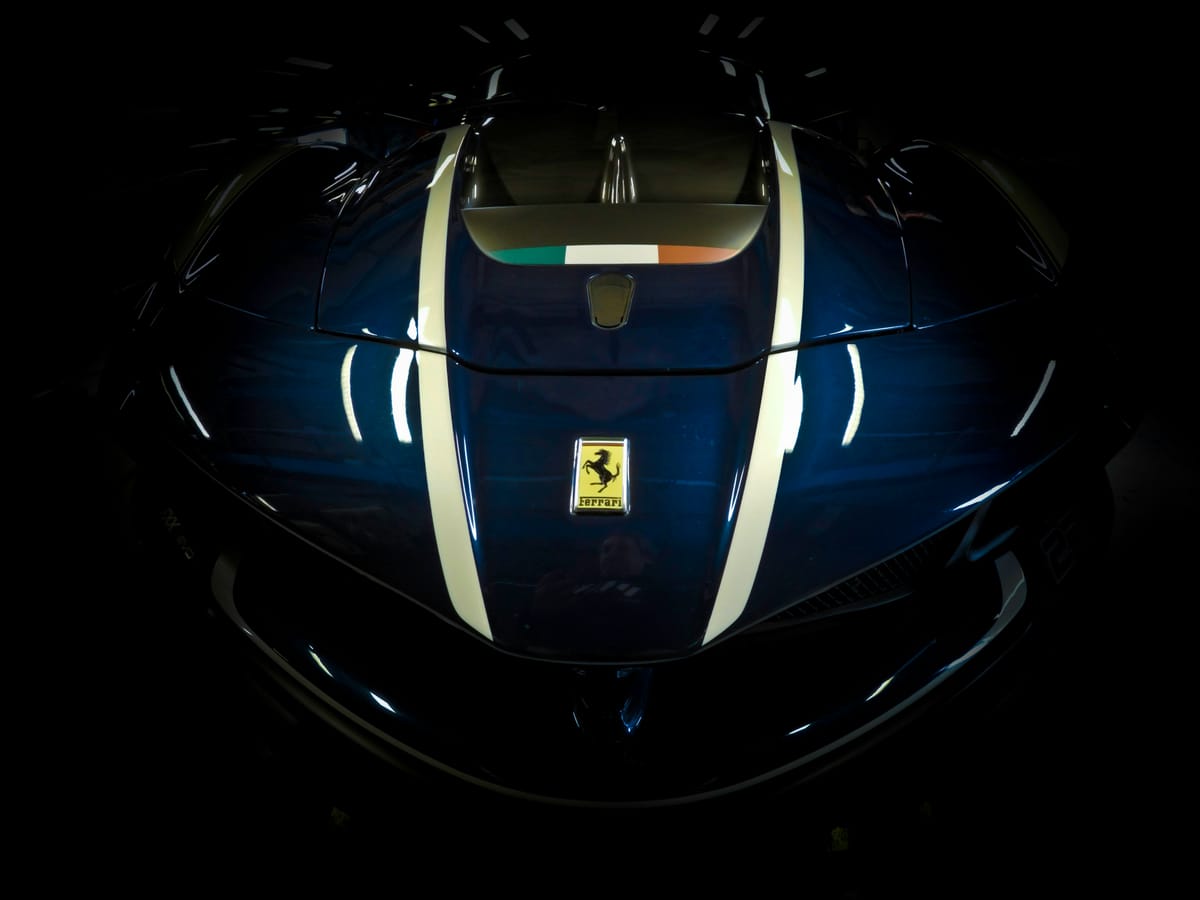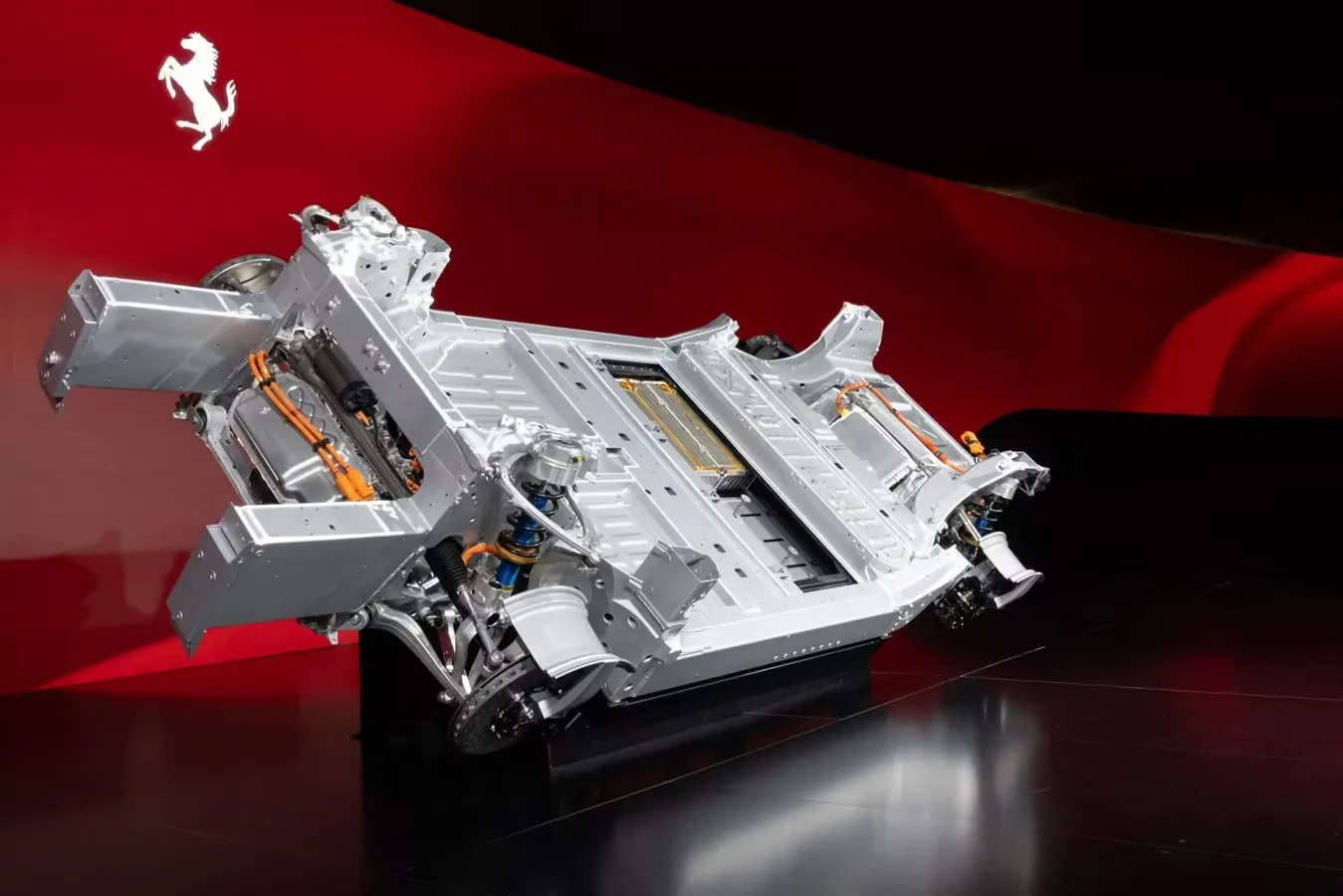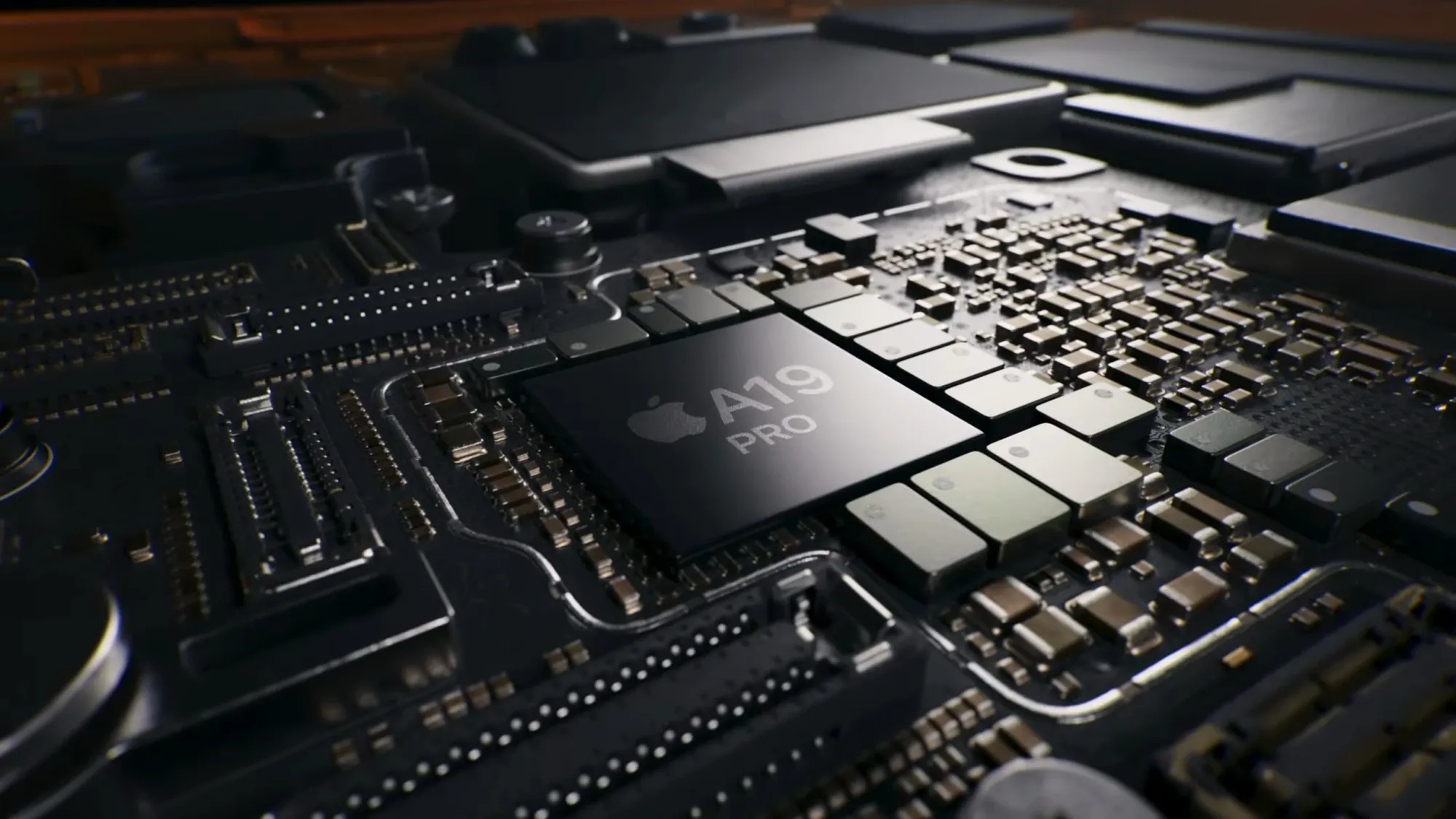Ferrari Halves EV Target, Prioritizes Agility and ICE Future Ahead of Elettrica Launch
Ferrari halved its 2030 EV goal (to 20%), keeping 40% gas engines for "agility." Its powerful electric car arrives in 2026.

Ferrari (RACE) has announced a significant shift in its electrification strategy, halving its target for fully electric vehicle production for the end of the decade. The Italian luxury carmaker now aims for 20 per cent of its models to be fully electric by 2030, a sharp reduction from the 40 per cent goal announced three years prior. This revised approach places continued emphasis on the internal combustion engine (ICE) as a means to navigate what the company views as “uncertain times”.
Under the updated plans, Ferrari’s 2030 lineup will be balanced: 40 per cent of its cars will be powered by the internal combustion engine, 40 per cent will utilize hybrid technology, and 20 per cent will be fully electric models. This marks a fundamental change from its 2022 plan, which had targeted 40 per cent EVs and only 20 per cent ICE models in 2030. CEO Benedetto Vigna explained this strategic flexibility, stating that in a time of uncertainty, "agility" is the only thing that can help the company. Vigna also stressed the necessity of offering clients the "same driving thrills" regardless of whether they choose an ICE, hybrid, or electric model. For the first half of the year, petrol models already accounted for 53 per cent of total shipments.
The strategy revision comes as Ferrari prepares for the launch and delivery of its first-ever electric sports car, the "Elettrica," with deliveries beginning in late 2026. The company has started to unwrap the model, teasing key performance benchmarks. The Elettrica, which will be a five-seater, is set to feature a "roomy" space and high-performing batteries. The production-ready chassis has been showcased, which is made with recycled aluminium and will boast an extremely short wheelbase.

The performance specifications teased for the Elettrica are substantial. It will utilize four motors—one on each wheel—delivering the equivalent of more than 1,000 horsepower. It is expected to reach 100 kilometers per hour (62 mph) in 2.5 seconds, achieve a top speed of 310 kph, and boast a range above 530 kilometers. To maintain the sensation of driving a Ferrari, the company focused extensively on sound, developing a system that amplifies vibrations from the electric motor and powertrain components, and replicates the feeling of shifting without the mechanical linkage.
Despite these innovations, the company’s cautious approach acknowledges current technological limits. Vigna noted that he decided against making the first electric model a supercar because "You cannot make a Ferrari supercar with the electric technology that there is today". Ferrari is managing the electric transition by developing and producing all strategic EV components—including high-voltage battery packs, e-axles, and inverters—in-house at its new “e-building” facility in Maranello.
Beyond the Elettrica, Ferrari is focused on preserving its brand strength by maintaining scarcity. The group plans to launch an average of four new cars a year between 2026 and 2030, aiming for models that are limited in volume but offer a greater variety. The company continues to benefit from personalization, which accounts for about 20 per cent of its annual revenue. To deepen engagement with its growing client base, Ferrari plans to expand its lifestyle strategy by opening "Tailor Made" centers in Tokyo and Los Angeles in 2027, and flagship stores in London and New York in 2026.



